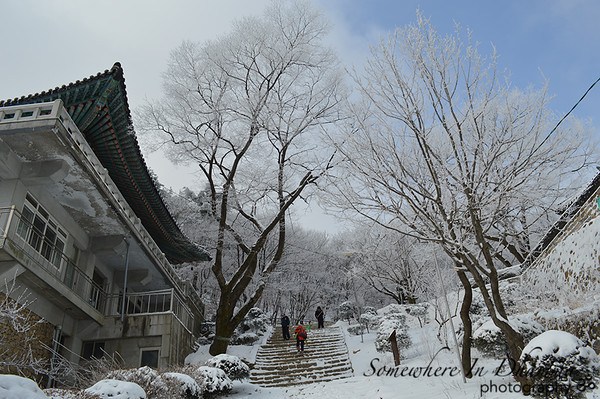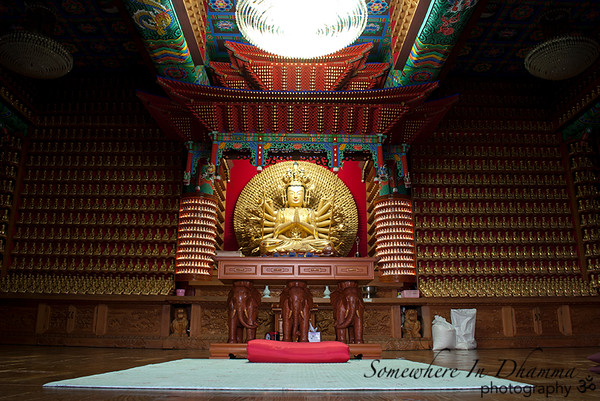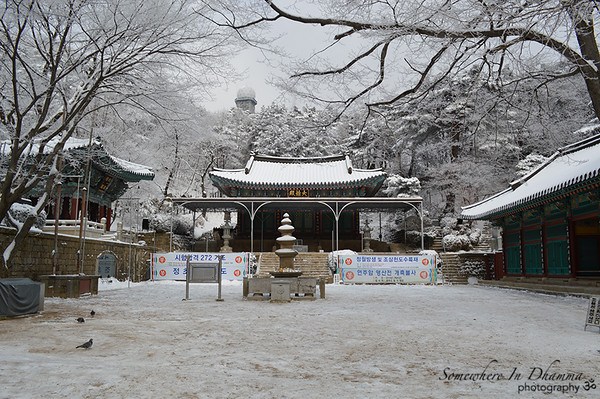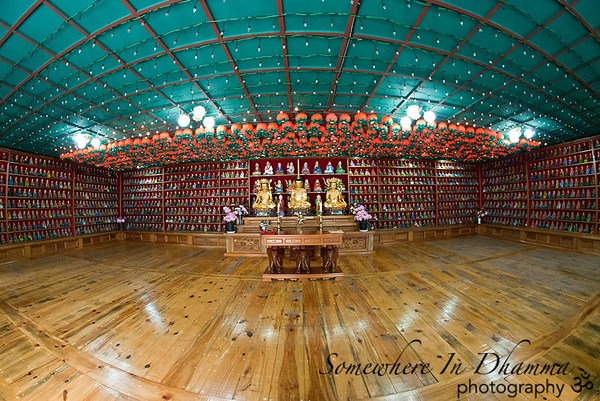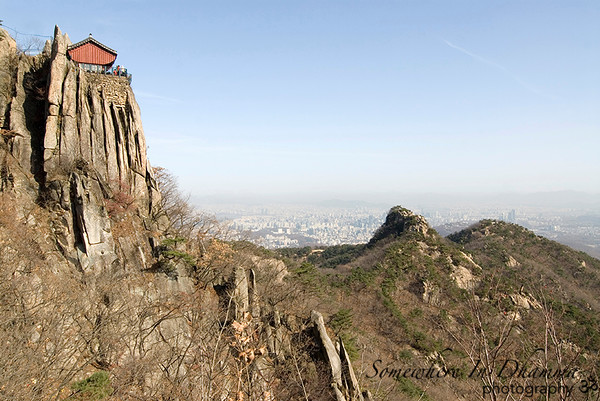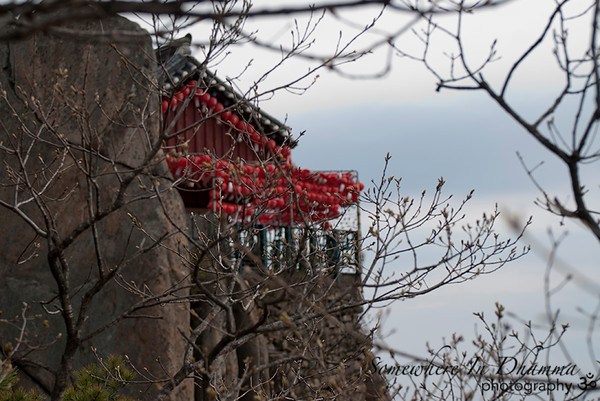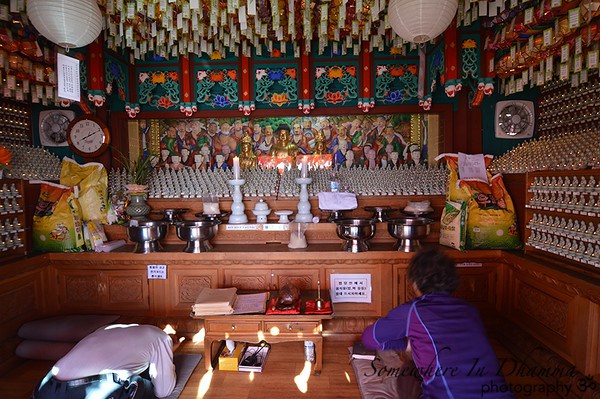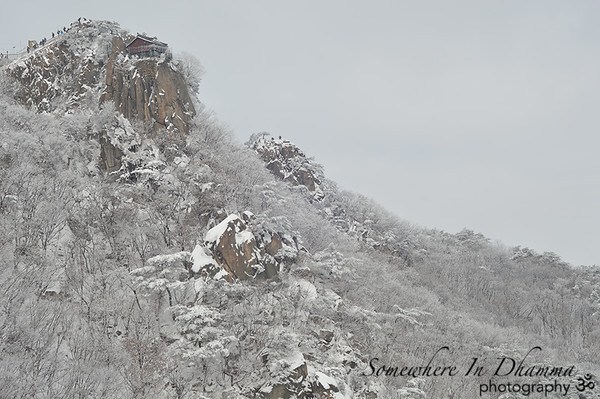Yeonjuam Hermitage/Yeonjudae – 연주암/연주대 (Gwacheon, Gyeonggi-do)
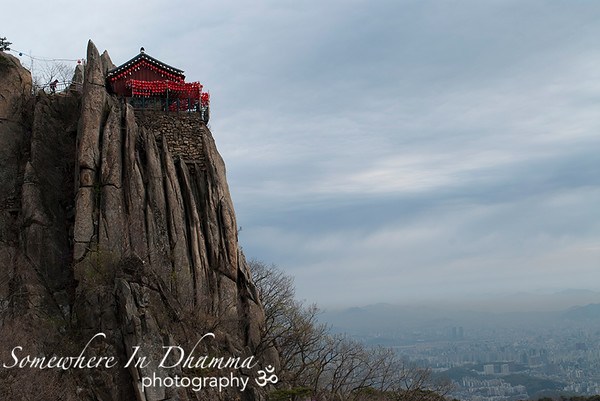
Hello Again Everyone!! This is Giuseppe with my second contribution to the site. Hope you enjoy! Throughout my years of living and traveling in Korea, I’ve always had a small collection of “comfort” places that I tried to get back to now and again, depending on where I lived. I appreciate the sense of intimacy that develops from this relationship with a place; getting to know some of the locals, enjoying a specific restaurant, finding hidden trails, knowing a place through the four seasons. Since moving to suburban Seoul, Yeonjuam Hermitage, and its spectacular Yeonjudae, perched on the edge of a sharp cliff, has been one of those places.
The great and fondly remembered monk, Uisang-daesa, is credited with having first established the temple in 677 A.D. The complex of halls and shrines were rebuilt, starting in 1392 and continuing throughout the 1400’s. This early-Joseon era complex was completely wiped out and buried by a landslide, eventually being relocated higher up the slopes, on safer grounds, I assume. Much of the temple, in its current incarnation, was built during or after the 1970’s. Its original name was Uisangdae, but was changed to Yeonjudae (戀主臺), which roughly translated to “Adoring the Kingdom Cliff”. There are two legends attached to this name. The first is that loyalists of the fallen Goryeo Dynasty came to stay here as the view allowed them to peer across at their former kingdom in longing. The second is that two princes, Yang-Ryeong and Hyo-Ryeong, retreated here after their younger brother was named their father’s successor (and became the Great King Sejong). From here they looked over the kingdom, longing for the throne. I think both instances are plausible. If it was already a place known for its view of Seoul, it makes sense that the two brothers would have also chosen to come here. In the ruins that were excavated, several dragon and phoenix insignia were found, meaning this temple was strongly connected to the royal palace.
It’s not an easy temple to get to, you must hike, and it wasn’t until my third attempt that I managed to find the right trail. If your goal is just to see this temple (not a bad reason to climb Mt. Gwanaksan!), the most direct route starts by Gwacheon Hyanggyo, 500 meters up from Gwacheon subway station. Following a gorgeous, rocky trail along the stream that flows down from the temple, you eventually arrive at a steep, massive stone staircase that leads to the courtyard between the Gwaneum-jeon Hall and the temple office. The Gwaneum-jeon Hall houses a severe looking 1,000-armed Gwanseum-bosal, quite stunning actually. During my last visit, in May, the Hall of Arhats had been completely torn down and the collection of hand-carved statues, each one unique, were sitting in the far-side of the Gwaneum-jeon Hall. They are some of the best wooden Arahat carvings in Korea, and the largest collection I’ve encountered
Turning left, you face the courtyard and a medium-sized stone pagoda with the main hall standing behind. To the left of the main hall, upon a terrace is the temple bell and further up the slope is the Hyo Ryeong Hall enshrines the portrait of Grand Prince Hyo Ryeong. To the right of the main hall, the trail continues beneath some twisted pines, where I often see a couple of morning doves. It leads a short way up to a beautiful little Samseong-gak Hall, with a wonderful old set of paintings, from left to right, Sanshin (The Mountain Spirit), Chilseong (The Seven Stars), and Dokseong (The Lonely Saint). The quality of the work executed on these paintings is quite exquisite.
From here, bear right and follow the path to the top of a small crag where a brand new white pagoda has been installed. Or, head left, past where the Hall of Arhats had been and continue along the stone path about 400 meters to Yeonjudae. There is a couple of tricky steps, so watch your footing. About halfway to the top, there is a look-off that gives you the best photo-op. I usually spend a fair amount of time here, soaking it in. For some, just this view might be enough but if you wish to continue to the shrine, at the peak follow the rope and stainless rail as it veers right of the peak.
Climbing over the granite stones is a bit treacherous, especially in the ice or rain, but with a little extra care, it’s not too bad. As you approach, there is a sign asking that day-hikers do not enter, as it’s a site of devotion, but no one will turn you away. That said, an amount of respect is best shown. As you round the wall of granite that keeps Yeonjudae hidden until you’re right beside it, there is a white Medicine Buddha (Yaksayeorae-bul) carved in the wall that is said to have magical healing powers for those who pray to it. In front of the shrine, there is usually a crowd gathered doing bows (it’s a great place for 108 if your knees feel up to it!). The view from in front of the shrine is spectacular, spanning all of Seoul. Taking pictures of the view isn’t a problem but you’ll have to use cunning to photograph the shrine, when none of the attendants are looking. My favorite spot to sit and have a snack is on the far side of the shrine, between the rail and the cliff. I like to grab a mat and looking across, over Yeonjuam Hermitage.
At this point, I’ll head back to the Gwaneum-jeon Hall, where on the bottom floor, half way down the stone stairs, there is a dining hall (don’t wait too long, it’s not open long passed noon). The bibimbab is a bit salty but the doenjang guk hits the spot and is always appreciated for the hike down the hill. The food is free but it’s temple etiquette to eat all your food.
HOW TO GET THERE: The best root is from Gwacheon Station, Line #4. Take exit #7 and head straight up the path, about 400 meters, then turn left when you reach the end. After another 100 meters or so, you will arrive at the trail-head, an open space with a large stream bed and a bridge that leads to Gwacheon Hyanggyo. Cross the bridge and continue past the vendors selling gimbap, boiled eggs, drinks, and hiking gear. It could take anywhere from one to two hours to reach Yeonjuam Hermitage, depending on your pace.
There are several trails that lead to the peak, including from Sadang Station and the Seoul National University grounds, but I’m not familiar enough to recommend them. These trails have stunning mountain scenery but are quite long and very easy to get lost on if you do not know the way.
OVERALL RATING: 8.5/10. I give Yeonjuam Hermitage bonus points for being a lively temple with a great atmosphere at the top of a mountain. This is a rare experience. If it were at the base of the mountain, it wouldn’t seem nearly as spectacular. Also, the view of Yeonjudae is a 10/10. Absolutely stunning, and worth a bonus point, for sure!
